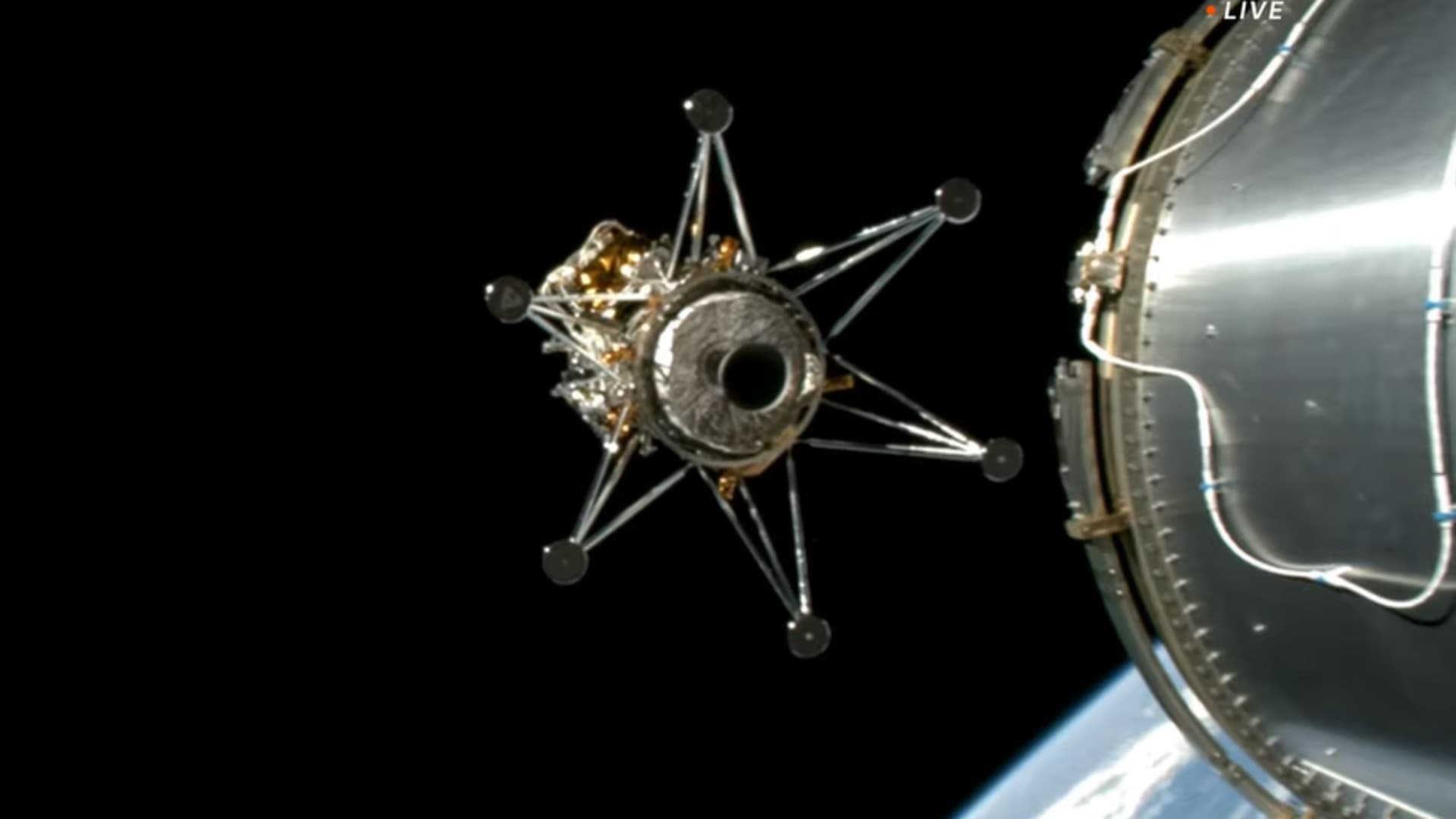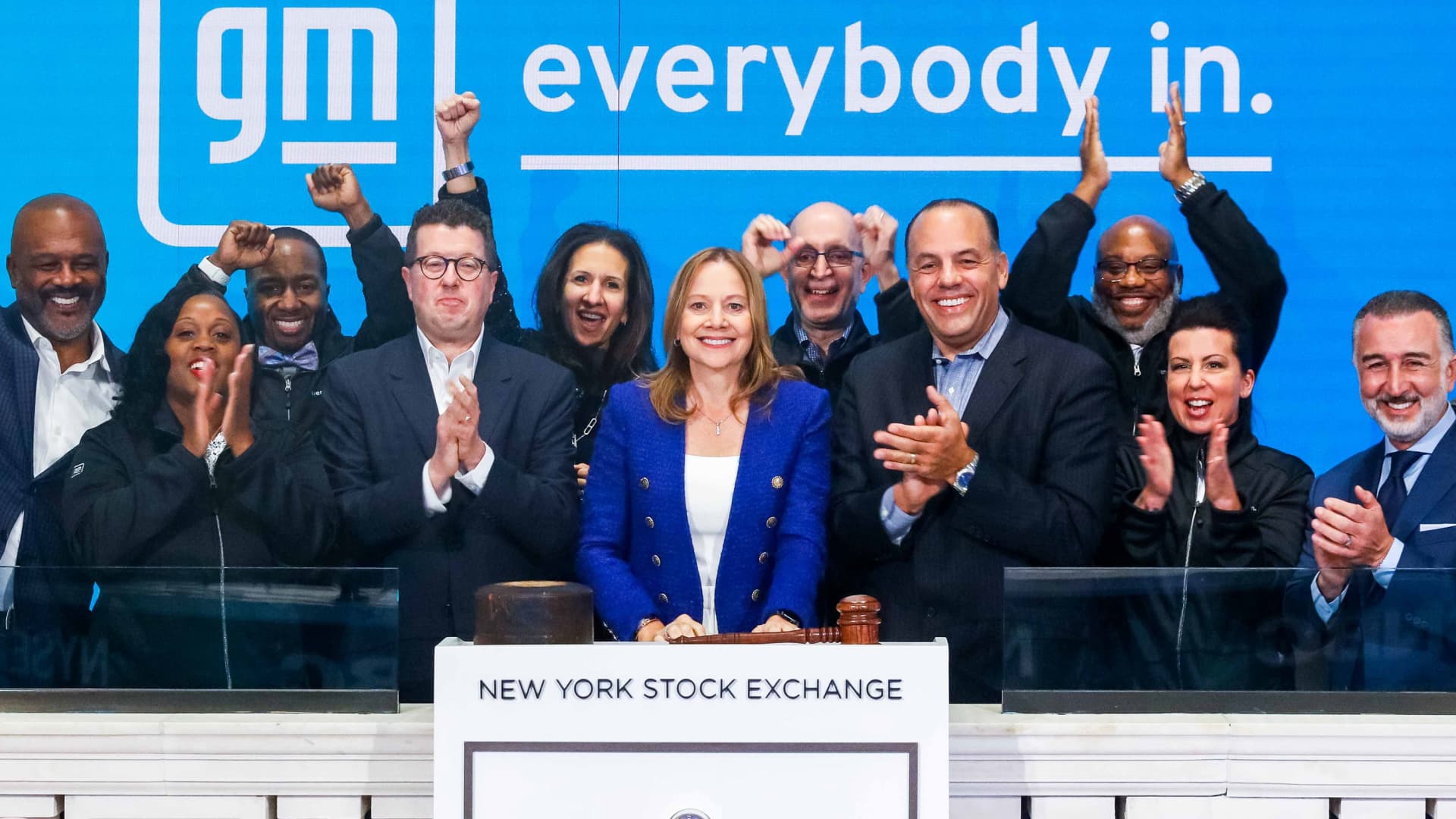A SpaceX Falcon 9 rocket carrying the Nova-C lander for the IM-1 mission launches from pad 39A at Kennedy Space Center at 1:05 a.m. EDT on February 15, 2024 in Cape Canaveral, Florida.
Pablo Hennessy | Anadolu | fake images
Based in Texas Intuitive machines The inaugural lunar mission began early Thursday morning, heading toward what could be the first U.S. lunar landing in more than 50 years.
Intuitive Machines' Nova-C lander launched from Florida on SpaceX's Falcon 9 rocket, beginning the IM-1 mission.
“This is a deeply humbling moment for all of us at Intuitive Machines. The opportunity to return America to the moon for the first time since 1972 is a feat of engineering that demands a hunger to explore,” said Intuitive Machines' space vice president. systems Trent Martin said during a press conference.
Intuitive Machines' Nova-C “Odysseus” lander deploys from the upper stage of SpaceX's Falcon 9 rocket to begin the IM-1 mission.
nasa television
The IM-1 lander, named “Odysseus” after the Greek mythological hero, carries 12 government and commercial payloads, six of which are for NASA under a $118 million contract.
Sign up here to receive weekly editions of CNBC's Investing in Space newsletter.
NASA leaders emphasized before launch that “IM-1 is an Intuitive Machines mission, it is not a NASA mission.” But it marks the second mission under NASA's Commercial Lunar Payload Services (CLPS) initiative, which aims to deliver science projects and cargo to the moon with increasing regularity in support of the agency's Artemis crew program.
The agency views the CLPS missions as “a learning experience,” NASA deputy associate administrator for exploration in the science missions directorate Joel Kearns told reporters before the launch.
“The success of every landing is never assured,” Kearns said. “NASA is using CLPS to conduct our scientific research and technology testing on the lunar surface and to develop a commercial community of robotic landing service providers for Artemis.”
Intuitive Machines outlined 16 milestones it hopes to achieve with the IM-1, with the successful landing representing the final step. So far, the company confirmed that IM-1 has achieved three of those milestones: launch, rocket separation and autonomous commissioning.
In an update eight hours after launch, Intuitive said the IM-1 spacecraft was in a stable position with its solar-powered batteries charging and had established contact with the company's mission control in Houston.
The IM-1 lander is expected to spend about eight days traveling to the Moon before descending to the surface on February 22. The mission targets the “Malapert A” crater, about 300 kilometers from the south pole of the Moon. After landing, Intuitive Machines intends to operate Odysseus on the surface for up to seven days.
Intuitive Machines shares rose in trading from Wednesday's close to $4.98 per share. It's about half the price they were when the company's shares debuted in February 2023 on the Nasdaq after a SPAC merger.
Intuitive Machines' Nova-C lunar lander on display at NASA's Marshall Space Flight Center.
POT
Last month, Japan became the fifth country to land on the Moon, after Russia (then the Soviet Union), the United States, China and India.
Both governments and private companies have made more than 50 attempts to land on the Moon with mixed success since the first attempts in the early 1960s, and the record remains shaky even in the modern era.
Last year, Japanese company ispace made its first attempt to land on the moon, but the spacecraft crashed in the final moments. Last month, the American company Astrobotic launched its first lunar mission, but encountered problems shortly after launch. The flight was interrupted and a lunar landing attempt failed.
Although Astrobotic's recent attempt was unsuccessful, Kearns said NASA was “really happy with how open and transparent” the company was about the mission and what it learned from it.
“[Astrobotic] “We did a virtual meeting with all the other CLPS businesses to let them know what they found,” Kearns said.
There are more attempts on the way. NASA expects American companies to launch additional missions this year, while China plans to launch another lunar lander in May.









